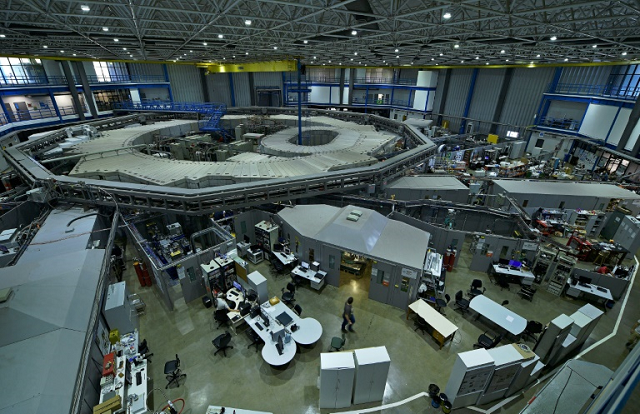Race against time to finish Brazil's particle accelerator
The fourth-generation synchrotron, called Sirius, is in the final stage of construction

PHOTO: AFP
The fourth-generation synchrotron, called Sirius, is in the final stage of construction and will be used to make advances in medicine, health, energy and the environment.
Work on the gigantic particle accelerator in Campinas, some 90 kilometers (55 miles) from Sao Paulo, began in 2015.
Six synchrotron light beams are expected to be operational in 2020 -- short of the 13 scientists had hoped for, but sufficient for testing to start.
"Time is very important in science," said Harry Westfahl Jr, scientific director at the Brazilian Synchrotron Light Laboratory (LNLS).
"If we could run (the accelerator) today, it would be without a doubt the most efficient synchrotron in the world.
"If it is a decade from now, it will be an excellent synchrotron, but not the most competitive one."
The particle accelerator measures 518 meters (1,700 feet) in circumference and is expected to cost a total of $585 million.
So far, the LNLS has received only 30 percent of the funds for this year from the Ministry of Science and Technology.
Funding for scientific research was squeezed under previous governments, but the cuts have deepened since President Jair Bolsonaro took power in January and the future money flow for Sirius is in doubt.
China launches remote sensing satellite
"Certainly there are still uncertainties," Jose Roque, director of LNLS, told AFP.
"For now, nothing indicates that we will not be able to finish (the project) next year."
Only one other such accelerator exists in the world, the MAX IV in Sweden.
France is also upgrading its third-generation synchrotron, which should be ready by next year.
Sirius will generate synchrotron light, a source of electromagnetic radiation, of such intense brightness that it can reveal the structures of organic and inorganic material such as proteins, viruses, rocks, plants and metallic alloys, all in high resolution.
Brazil entered the small club of countries with synchrotron technology in 1997 with the UVX, a second-generation accelerator, which is the only one of its kind in Latin America.
The Sirius project was originally planned to be an upgrade of the UVX into a third-generation accelerator.
But the scientific team decided to take a leap and build a world leader.
Team behind world's first black hole image wins 'Oscar of science'
"I do not see another instrument that has a scope as diverse as this one," Junior told AFP, as he walked around the ring-shaped machine that resembles the iconic Maracana stadium in Rio de Janeiro not just in size but also shape.
Junior said public funding for the project was essential.
"An obscurantist discourse may lead to questioning the usefulness of certain aspects (of science)," he says.
"It is like questioning (the theory of) evolution."



















COMMENTS
Comments are moderated and generally will be posted if they are on-topic and not abusive.
For more information, please see our Comments FAQ